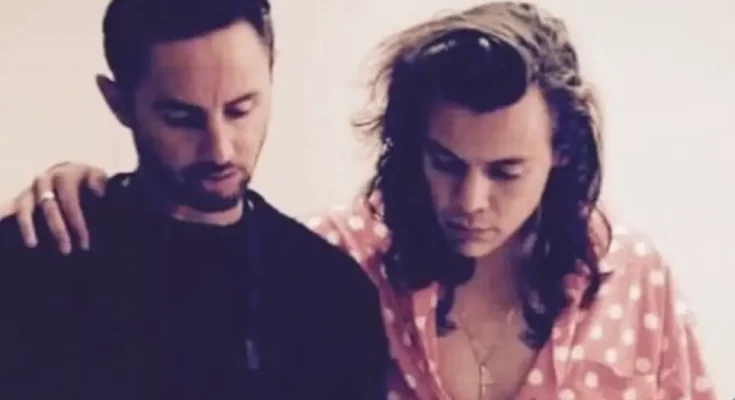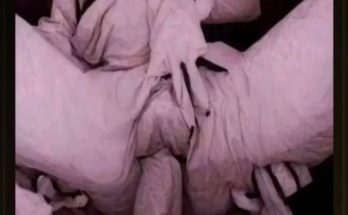Paul Roberts, the British choreographer who helped define One Direction’s kinetic image on stage and screen and later worked closely with Harry Styles, has died at the age of 52 after a battle with cancer, prompting tributes from across the pop world to a creative figure colleagues described as both exacting and unfailingly warm. The death was announced by his partner, the director and photographer Phil Griffin, in a statement posted to Instagram that said Roberts passed away at home on the evening of 26 September “after a courageous battle with cancer,” and that “his departure, much like his life, was filled with grace.” News outlets that reviewed the post reported that Roberts died “gently at home, surrounded by his family.”
Roberts’ death resonated especially among artists and crew who worked with him during the peak of One Direction’s global success, when he served as the group’s staging director and choreographed a string of their signature music videos, including “Kiss You,” “Best Song Ever” and “Steal My Girl.” He later collaborated with Styles on the 2021 “Treat People With Kindness” video, a black-and-white pastiche featuring Styles and Phoebe Waller-Bridge that earned the MTV Video Music Award for Best Choreography, cementing Roberts’ reputation for marrying pop accessibility with classic musical-theatre grammar. Obituaries and tributes also recalled his credits with the Spice Girls, Sir Paul McCartney and Katy Perry, alongside television and stage assignments that extended well beyond chart pop.
Griffin’s announcement drew an immediate response from high-profile former collaborators. “This is heartbreaking,” wrote Sam Smith beneath the Instagram post, adding: “My thoughts and heart is with all of Paul’s family and friends at this hard time. Paul was a light in this world. I’ll never forget his kindness and his sparkle. His magic will never leave the people he loved. Paul is Everlasting.” Emma Bunton, who worked with Roberts on the Spice Girls’ 2019 reunion tour, said: “My heart is broken being in his company was my happy place. Thinking of you @thephilgriffin sending love to you and all his family.” Sophie Ellis-Bextor called Roberts “so special,” saying he was “so talented, yes, but also warm and sweet and thoughtful and fun,” and that she was “so sorry to hear he’s not here any more.”
The wave of remembrances extended to musicians and performers who worked alongside One Direction during their arena years. Guitarist and music director Dan Richards said Roberts was “one of the best, always such a great person to be around,” while Ian “H” Watkins of Steps wrote: “Devastated. What an incredible human Paul was.” Former Girls Aloud singer Kimberley Walsh said, “This is the saddest news I’m so so sorry @thephilgriffin. Paul was very special indeed. Sending you all my love,” and fans connected to the One Direction orbit added that the “1D family” had “lost another member,” a reference to the October 2024 death of singer Liam Payne that was marked at the BRIT Awards earlier this year. Roberts’ own community of dancers and production crew posted images from rehearsals and backstage corridors, framing him as a mentor who insisted on precision while protecting a playful atmosphere that made long days bearable.
Roberts’ professional arc tracked the evolution of British pop staging from the late 1990s to the era of short-form video and stadium spectaculars. After early work across television and promotional campaigns, he was recruited to shape One Direction’s presentation as the group’s profile expanded beyond The X Factor. Colleagues say he brought a director’s eye to movement, designing show tracks and camera-aware choreography that respected the band’s non-dancer roots while building repeatable motifs fans could mimic. In a 2021 interview he reflected on working with the quintet: “I knew very early on that there was a magic about them … in personal moments you got to see them flourish. They’d mess around doing silly dance moves but I’d think, ‘Actually if you wanted to dance really well you sure as hell could do it.’” That approach—polishing spontaneity without erasing it—became a signature of his work with the group in film, stadium and television formats.
As Styles’ solo career took off, Roberts remained part of the creative brain trust that translated songs into movement-led stories. The “Treat People With Kindness” video, choreographed with vintage swing idioms and precision ensemble patterns, was singled out by peers as a model of how tightly drilled choreography can elevate a pop star’s image without overwhelming the performer. The clip’s VMA recognition in 2021, industry publications noted, underscored a period in which Roberts also contributed to arena shows and television specials for artists with divergent aesthetics, moving between retro glamour and minimal, camera-guided staging depending on the brief. His résumé in recent years also included workshopping dance for theatre projects, with associates saying he had been engaged on material connected to Pete Townshend’s “Quadrophenia” ballet.
The immediate tributes emphasised not just technical command but personal qualities that colleagues said made Roberts a sought-after presence in rehearsal rooms. “Such a fabulous energy of a person and so talented,” wrote La Voix, the performer also known as Christopher Dennis, adding that “we will miss you terribly.” Pixie Lott described him as an “amazing, special, talented, one of a kind, glowing man,” while former All Saints singer Nicole Appleton said, “You brought so much love and joy and pure happiness to our chaotic world.” For Griffin, who announced the death and received many of the condolences directly, the lines about “grace” and a “courageous battle” formed the centre of a message that friends said reflected Roberts’ temperament under pressure: a refusal to cut corners, an instinct to protect younger dancers, and an ability to steady productions when schedules threatened to overrun.

Industry accounts placed Roberts in the vanguard of British choreographers whose careers spanned both legacy acts and Gen-Z stars. Alongside his work with One Direction and Styles, he contributed to touring productions or broadcast performances for McCartney and Perry and helped assemble set-piece numbers designed to read instantly on television screens and social feeds. Colleagues said that skill—understanding the lens as an active partner in choreography—was crucial to the success of One Direction’s most-viewed videos, where brisk, repeatable movements helped transform casual viewers into fans. It was a sensibility, they said, that Roberts brought into pre-production meetings with directors and editors, insisting that choreography be built for the frame rather than applied after the fact.
Those closest to One Direction’s operation during their touring peak said Roberts’ job title—staging director—understated his influence on how the shows felt from the back row. He was responsible for transitions, exits and entrances, and the rhythm of the set beyond the songs themselves, designing moments that allowed the singers’ personalities to register while the crew reset scenic and lighting cues. Alumni from the production team recalled that he favoured clean geometries and diagonals that read inside cavernous arenas, and that he built in space for crowd interaction without losing show discipline. As one former band colleague put it in a public note, he was “one of the best,” a phrase that, in the shorthand of touring crews, signals not only artistic results but also the baseline requirement for return hires: reliability under pressure.
Roberts’ final months, friends said, were marked by periods of treatment and stretches of work fitted around it. Public communications about his health were limited to the brief lines in Griffin’s announcement, which referred to a “courageous battle with cancer.” In the hours after the statement, messages from dancers and assistants circulated privately, remembering early breaks, difficult transitions, and notes scribbled in the margins of running orders—tokens of a quiet mentorship culture that colleagues said is rarely visible outside the business. Others posted stills from “Kiss You” and “Best Song Ever,” artefacts from a period when Roberts’ fandom-aware staging helped One Direction translate off-the-cuff humour into repeatable gags that audiences could anticipate and film.
For many fans, the news of Roberts’ death reopened memories of the band’s 2010s heyday and, inevitably, of Payne, whose death in 2024 triggered its own cascade of vigils and televised remembrances. While the two losses are unrelated, the proximity on the calendar contributed to a sombre register in fan forums reacting to Griffin’s post, with comments sending “so much love to his family and the 1D boys” and noting that the “1D family lost another member.” Lottie Tomlinson, sister of Louis Tomlinson, responded with a broken-heart emoji, one of many small gestures that collectively formed what one trade site called a “flood” of tributes from the wider One Direction network.
Roberts’ creative circle extended beyond mainstream pop, and colleagues in theatre and contemporary dance also posted memories of workshops and developmental labs in which he sought to translate pop timing into narrative dance. Associates said he was unusually generous with credit and quick to advocate for assistants’ first television calls, a reputation that meant his projects often doubled as training grounds. Producers who worked with him on broadcast shows said he understood the constraints of live television—camera counts, safety lines, commercial breaks—and that he could adjust blocking in real time when directors added or removed shots. Those skills, they said, made him a reliable choice for high-stakes specials where a missed mark could cascade through a production.
The practical arrangements around Roberts’ death were not immediately detailed beyond Griffin’s Instagram statement, and there was no formal announcement from a management company at the time tributes began to gather online. In the absence of a central family statement beyond Griffin’s, the record has been established largely through the Instagram post and the public remarks of former collaborators, many of whom addressed their condolences directly to Griffin and to Roberts’ immediate family. The consistency of the reported phrasing—“passed away gently at home,” “filled with grace”—gave the first wave of coverage an unusual degree of clarity about the circumstances, even as outlets differed slightly on whether the date of death fell late on Friday or into Saturday evening.
In the days ahead, attention within the industry is expected to turn to retrospective packages that collect Roberts’ most recognisable sequences and to the practical question of how in-progress assignments will be transitioned. For fans, the archive already exists in the form of videos whose movement vocabulary—shoulder pops, stair-running diagonals, ensemble shuffles timed to edits—became an unofficial language around which the One Direction audience built its own participatory culture. The acknowledgements now being shared by artists and crew suggest that, behind those mass-market moments, Roberts cultivated rooms where younger performers could develop with a measure of protection and where the pressures of pop production were buffered by humour and, when necessary, discipline.
Officials did not immediately release biographical details beyond his age, and public remembrances focused on the work rather than the private life. The portrait that emerged from colleagues’ posts was of a choreographer who moved comfortably among eras—able to update the show-dance idiom for a Styles video one year and slot into a veteran act’s tour the next—while remaining attentive to the particularities of each performer. “Being in his company was my happy place,” Bunton wrote, a line that, amid the technical talk of blocking and rehearsal calls, underscored why the tributes felt personal even when posted by chart-topping names. For a generation of fans and artists who learned his steps by imitation or command, the loss registered not only as the passing of a behind-the-scenes figure but as the disappearance of a steadying presence around which some of the past decade’s biggest pop projects cohered.
As those tributes continued, the contours of Roberts’ professional legacy were easy to trace in view counts and award credits, but the messages from dancers and assistants pointed to another measure: the network of performers who regarded him as the person who took a chance, made a call, or stayed late to drill a run-through until muscle memory took over. In a business that often packages the work of many into the story of one, the lines that colleagues chose for Roberts—“light,” “sparkle,” “special,” “grace”—read as an attempt to put the invisible back into the record. The result was a cross-section of pop—stars, crew, television producers and stylists—saying goodbye to the choreographer they trusted to make their risks look easy and their fun look inevitable.



